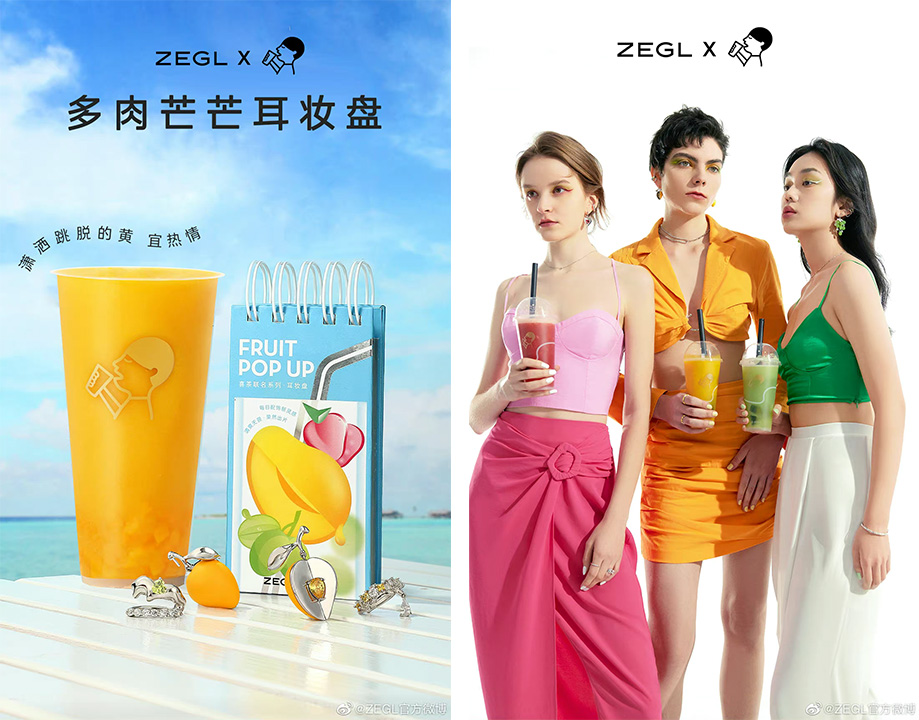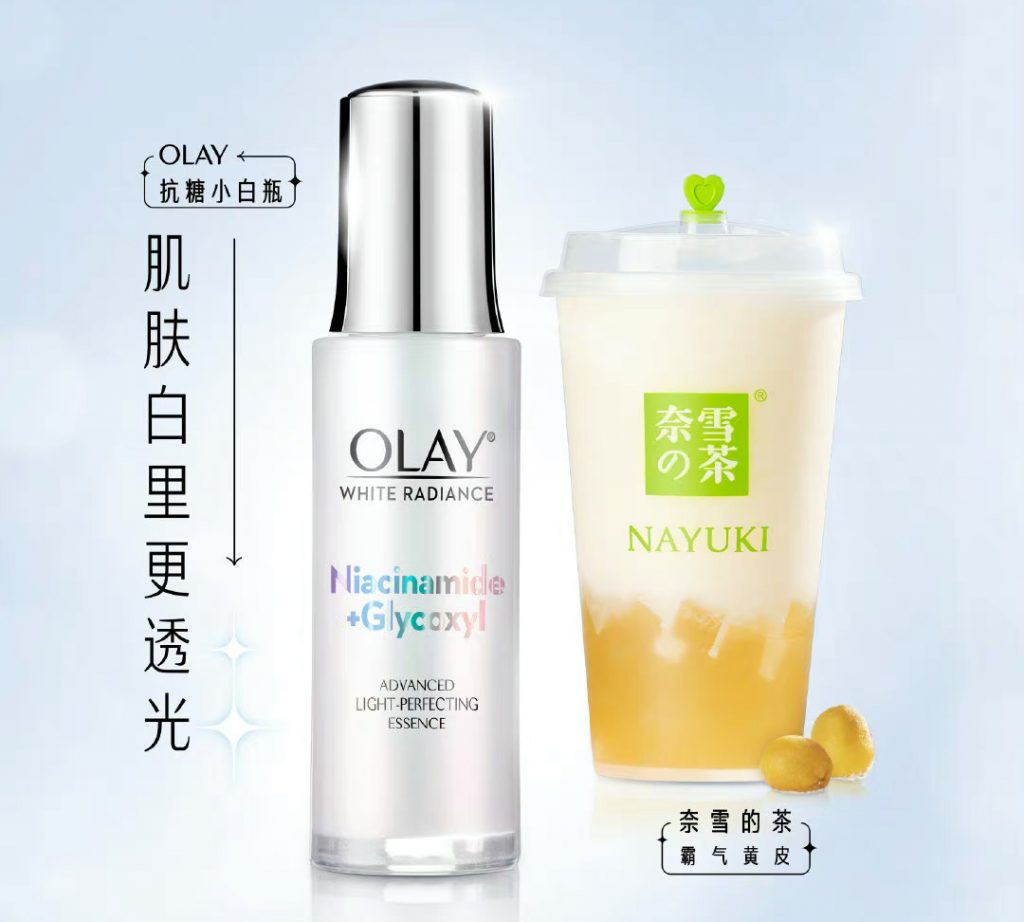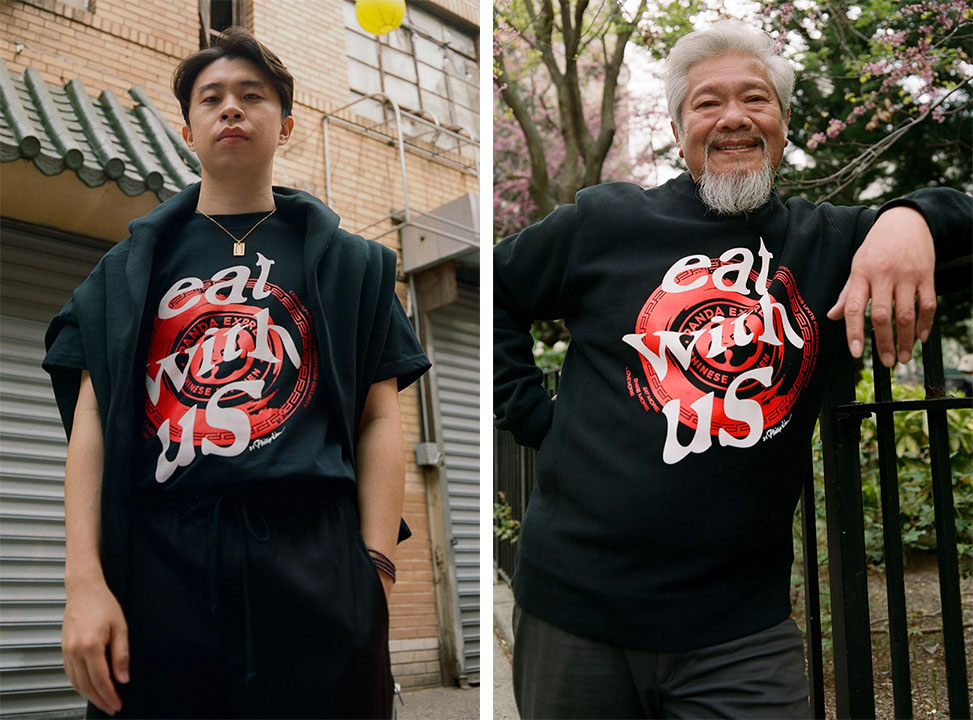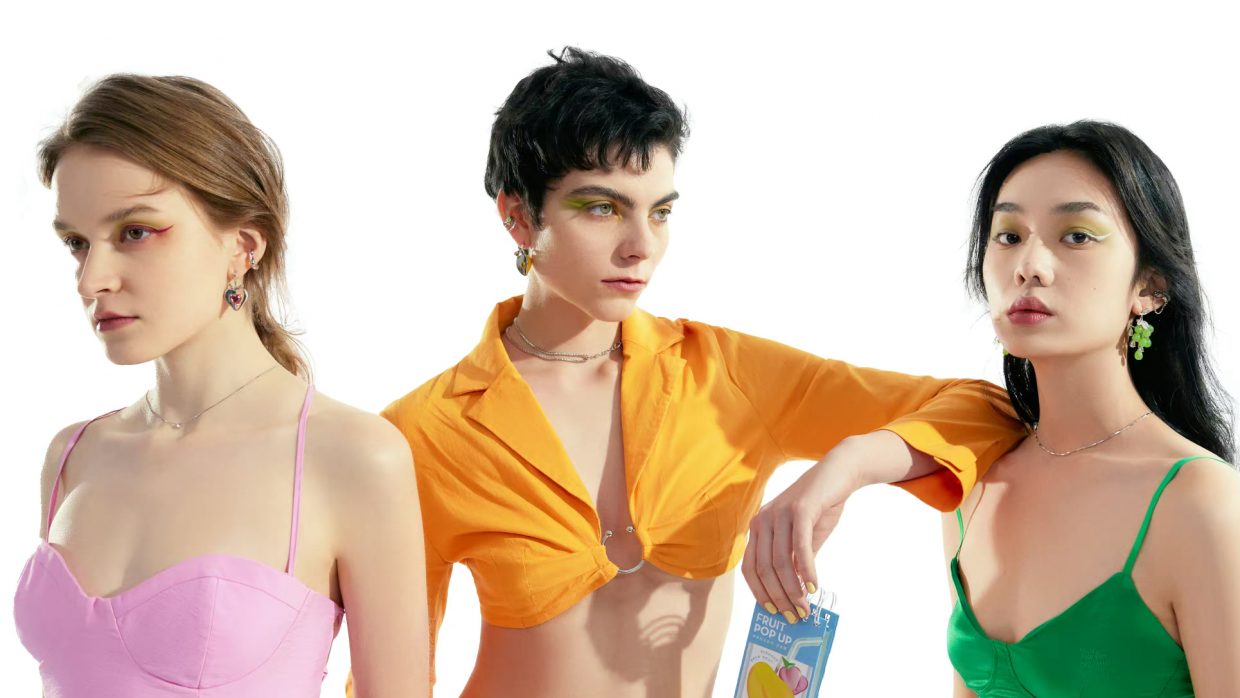Fashion and food are a match made in creative heaven, with both holding the ability to make a bold lifestyle statement. Much of this is playing out on social media in China specifically, where colorful posts showing culinary endeavors in the kitchen are as popular as unboxing or glow-up posts.
Luxury has long capitalized on our experiential relationship with food to build credibility, create multi-sensory experiences, and appear more relatable. This has been trending more during the era of the COVID-19 pandemic, when consumers have been stuck at home and in-person interactions have been largely replaced with digital-only experiences.
Through the opening of cafés, bars and restaurants, luxury houses have leveraged the foodie momentum in China. More recently, consumer-goods collaborations have continuously started trickling out, as a universally-relatable route to connect to all consumers.
The best example is the Zegl x Heytea collaboration, which dropped on May 30. Based on past performance metrics and the success of other collaborations between the Chinese tea brand and beauty and fashion lines, it is safe to say that even this will generate hype, contributing to the status of both.

Zegl collaborated with Heytea on fruit-themed accessories inspired by the latter’s fruit drinks. Photo: Zegl’s Weibo
Back in 2020, when Heytea partnered with Fenty Beauty, the collaboration practically broke the internet: in just ten days, the Weibo hashtag dedicated to the campaign received over 14 million views and 30,000 comments. Elsewhere, the Heytea collaboration with Adidas Originals for the ZX 7000 sneakers generated over 87k Likes and 530 comments on Instagram.
The Chinese tea label has also partnered with AAPE, Clarins, L’Oréal, Clinique, Pechoin and Marie Dalgar. More recently, it tapped Hiroshi Fujiwara for a collection that sold out in minutes. The campaign’s hashtag raked in 1.28 million views within six days and generated over 6,000 UGC posts on Xiaohongshu. Heytea has built a strong following among younger demographics, especially Gen Z, who are devotees of bubble tea as it photographs well for social media feeds.
A 2021 CLSA survey of consumers showed that 94 percent of respondents aged 20 to 29 bought bubble tea in the last three months. An industry analysis by Persistence Market Research highlighted that the global bubble tea market is forecasted to reach US$ 3.23 billion (21billion RMB) by the end of 2032, growing at a CAGR of 8.3 percent. Therefore fashion and beauty names are leveraging the trend by partnering with major industry players. While Heytea tops the list, another notable tie-up is Olay x Nayuki, released on May 22. In order to receive the gift box, consumers were encouraged to submit a review of one of Olay’s products or “share” Nayuki’s new bubble tea with a dedicated hashtag and tag friends.

Consumers could receive the Olay x Nayuki gift box by interacting with either brands online. Photo: Olay’s Weibo
With that being said, healthier habits appeal to young demographics too, especially as Chinese consumers improved their dietary habits as a result of COVID-19. Thanks to this, sugar-free Genki Forest sparkling water has flourished and consequently, landed a collaboration with leading local sports name Li-Ning on May 31. The co-branded limited edition gift box includes the ultra-light 19th generation running shoes Vitality Forest in a limited color with a bottle pendant. Thus far, the Weibo post announcing the partnership has drawn high engagement in China.
The fact that Li-Ning also recently trademarked “Ning Coffee” suggests that this debut consumer-goods collab might just foreshadow a further bridge between the brand and the beverage industry. Watch this space.

The Genki Forest x Li-Ning collaboration includes running shoes and peach-flavored sparkling water. Photo: Genki Forest’s Weibo
Another recent health-food x fashion drop in China is the Adopt a Cow and FINDING_UNICORN x @RiCO_RiCO_RiCO collaboration released on May 26. Both released a co-branded limited gift box of “Dream Ranch” that is expected to delight health-conscious consumers.
But it’s not all glowing. The Philip Lim x Panda Express collection released on May 10 didn’t stir much online conversation. The chain that serves American-style Chinese food joined hands with the fashion designer, donating 100 percent of proceeds to local organizations supporting food security during Asian American & Pacific Islander Heritage Month.

The Panda Express x Phillip Lim collection benefits a charity that addresses food insecurity in the AAPI community. Photo: Panda Express
Whether it’s a result of healthy eating or McDonalds and KFC’s domination in the Chinese market, fast-food isn’t winning right now in China as a whole and Panda Express is only America-based currently too.
Rightly or wrongly, culinary aficionados and fashion connoisseurs are seen as refined people who have a cosmopolitan orientation; thus, interacting with these demographic groups and exploring their visual identity may well allow audiences in China to feel like they have the same level of expertise.
The column also features in Jing Daily’s weekly Collabs and Drops newsletter — a 360-degree lowdown on the world of collaboration. For more analysis on the latest collaborations, sign up here.
Source: You Wear What You Eat: China Can’t Get Enough of Food Collabs | Jing Daily













